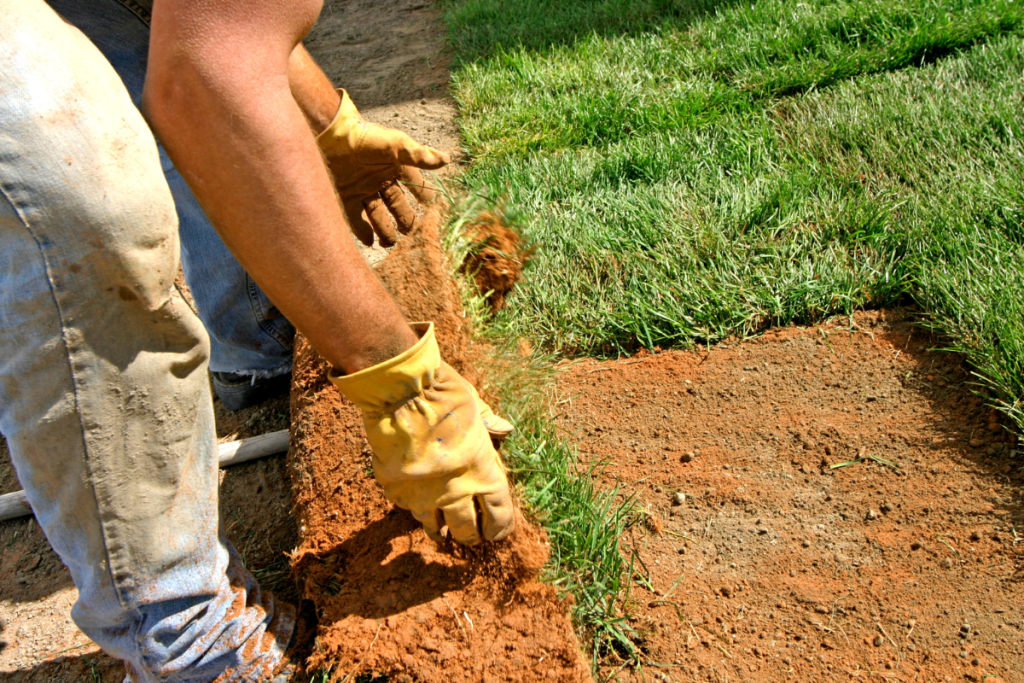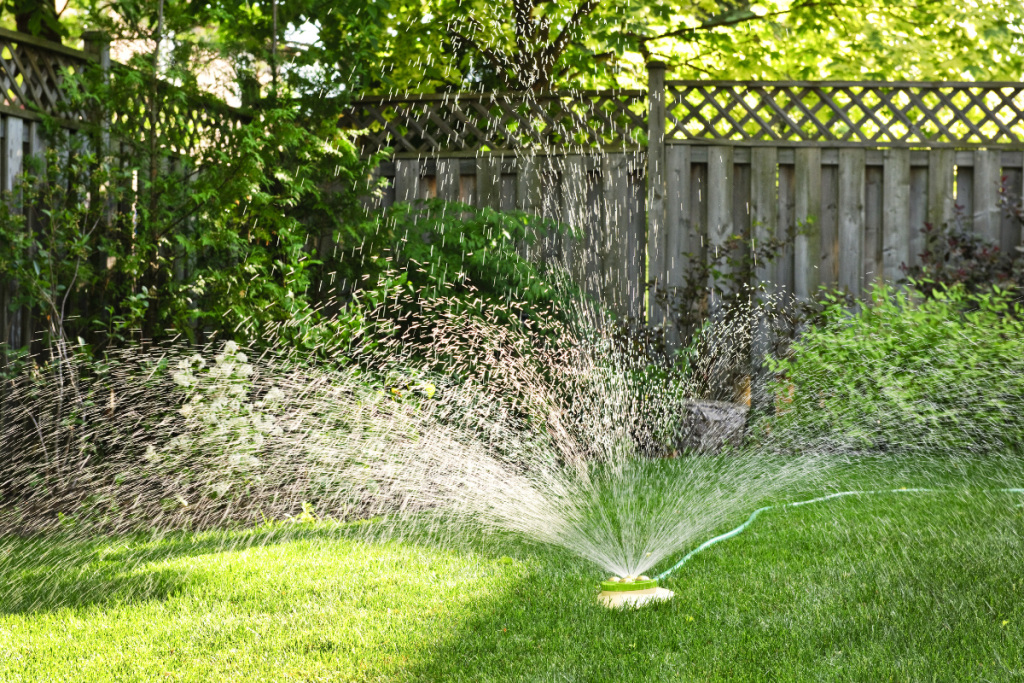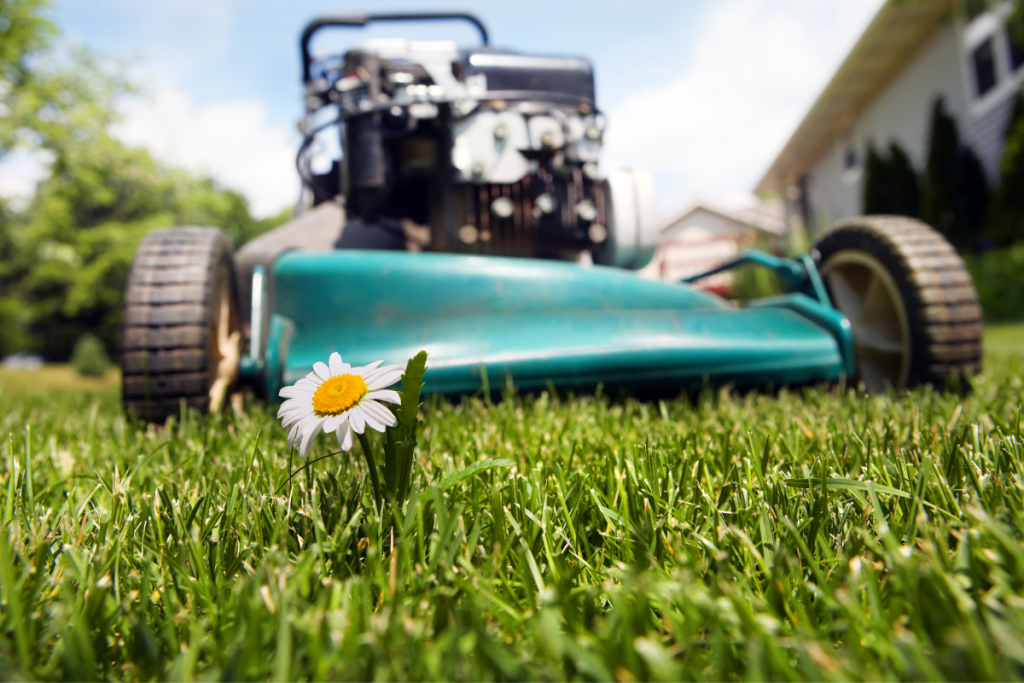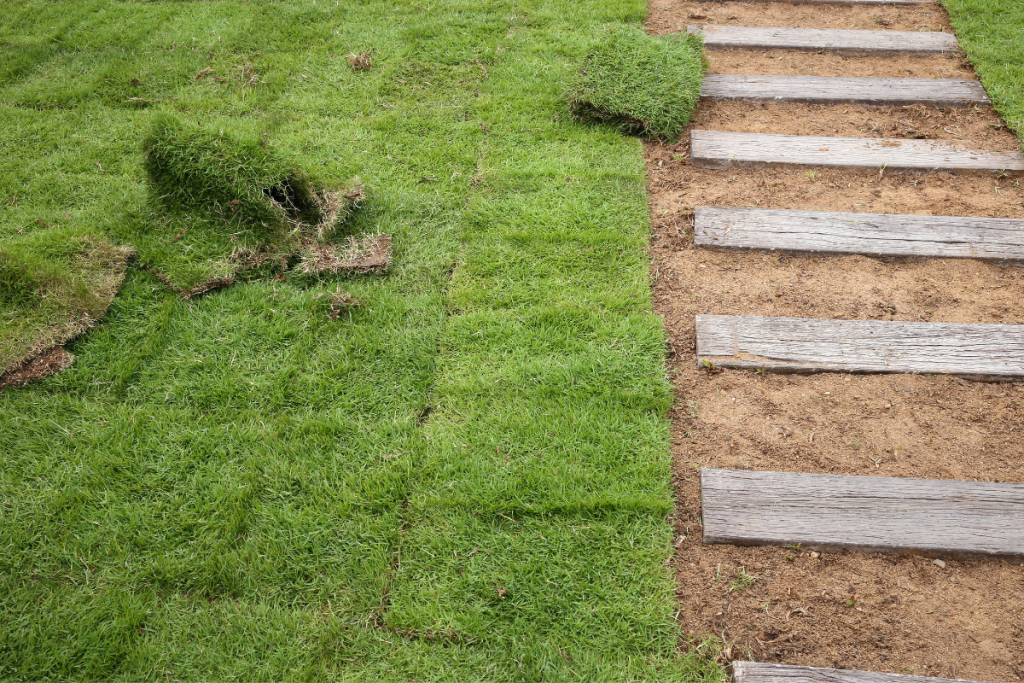Fort Worth, Texas, known for its vibrant community and beautiful landscapes, provides an ideal setting for homeowners looking to enhance their outdoor spaces. However, choosing the right type of sod is crucial when creating a lush and healthy lawn. This comprehensive guide will explore the top sod options for Fort Worth residents, including St. Augustine Raleigh sod, St. Augustine Palmetto sod, Bermuda sod, and Zoysia sod. Additionally, we will provide valuable insights on properly caring for your new sod, ensuring its longevity and beauty.

I. The Best Types of Sod for Fort Worth
St. Augustine Raleigh Sod
Characteristics of St. Augustine Raleigh Sod:
St. Augustine Raleigh Sod is a popular grass variety known for its dense growth and lush appearance, characterized by broad, flat green blades. It thrives in warm and humid climates, making it a preferred choice in regions like our lovely Fort Worth area. While it has moderate drought tolerance, regular watering is still necessary. Maintenance involves frequent mowing, periodic fertilization, and pest control measures. St. Augustine Raleigh Sod prefers well-draining soil with a slightly acidic to neutral pH range. It offers moderate wear resistance, making it suitable for residential lawns, but it may not withstand heavy foot traffic. Consulting with local experts here at Premier Nursery can ensure its suitability for specific conditions and provide tailored care recommendations.
Advantages of St. Augustine Raleigh Sod:
- Versatility: St. Augustine Raleigh Sod adapts well to various soil types, including sandy, loamy, or clay soils. It can thrive in different pH levels and tolerates both acidic and alkaline conditions, making it a versatile choice for homeowners in Fort Worth.
- Moderate Maintenance Requirements: Compared to other sod types, St. Augustine Raleigh Sod has reasonable maintenance needs. It requires regular watering, mowing, and fertilization but is generally less demanding in care and upkeep.
- Good Weed Suppression: Once established, St. Augustine Raleigh Sod forms a dense and thick turf, which helps suppress weed growth. The vast growth pattern of the sod leaves little room for weeds to take root, reducing the need for herbicides and weed control efforts.
- Drought Tolerance: Although St. Augustine Raleigh Sod is not as drought-tolerant as some other warm-season grasses, it still exhibits moderate tolerance to drought conditions. With proper watering practices and soil preparation, it can withstand periods of reduced rainfall.
- Soil Erosion Control: St. Augustine Raleigh Sod provides effective soil erosion control due to its dense growth and extensive root system. It helps stabilize the soil, preventing erosion caused by heavy rainfall or foot traffic.
St. Augustine Palmetto Sod
Characteristics of St. Augustine Palmetto Sod:
St. Augustine Palmetto Sod is a popular and widely used grass variety known for its lush and vibrant appearance. It has broad, dark green blades that create a dense, attractive lawn. This variety of St. Augustine grass is well-suited for warm climates, including the Southern United States. St. Augustine Palmetto Sod exhibits good shade tolerance, making it suitable for areas with moderate shade. It requires regular watering and has moderate drought tolerance. Maintenance involves routine mowing, fertilization, and occasional pest control. St. Augustine Palmetto Sod establishes a thick and healthy turf with proper care, providing an appealing landscape option for residential and commercial properties.
Advantages of St. Augustine Palmetto Sod:
- Adaptability to Different Soil Types: St. Augustine Palmetto Sod demonstrates good adaptability to various soil types, including sandy, loamy, or clay soils. It can grow in different pH levels and withstand acidic and alkaline conditions, making it suitable for various landscapes.
- High Foot Traffic Tolerance: This sod variety has excellent tolerance to high foot traffic. Its dense growth habit and robust root system help it withstand heavy use, making it an ideal choice for lawns that experience frequent activities, such as children playing or hosting outdoor events.
- Drought and Heat Tolerance: St. Augustine Palmetto Sod exhibits good drought and heat tolerance, making it suitable for the hot and dry climate of Fort Worth. While it still requires regular watering, proper soil preparation and irrigation practices can help it withstand reduced rainfall and high temperatures.
- Weed Suppression: Once established, St. Augustine Palmetto Sod forms a dense and thick turf that naturally suppresses weed growth. Its vigorous growth habit and tight coverage minimize bare spots and reduce the chances of weed invasion, resulting in a low-maintenance lawn.
- Soil Erosion Control: St. Augustine Palmetto Sod provides effective soil erosion control with its dense growth and extensive root system. The tightly knit turf helps stabilize the soil, preventing erosion caused by rainfall and foot traffic.
Bermuda Sod
Characteristics of Bermuda Sod:
Bermuda Sod is characterized by its fine leaf texture, giving it a soft and velvety feel. It has rapid growth and spreading capabilities, quickly filling bare areas and creating a dense turf cover. This grass variety thrives in total sun exposure, requiring at least 6 to 8 hours of direct sunlight daily. Bermuda grass is highly drought-tolerant thanks to its deep root system, which can access water from lower soil levels. It also has excellent wear and tear resistance, making it suitable for high-traffic areas. Its ability to recover quickly from damage ensures a visually appealing and durable lawn, making Bermuda Sod a popular choice for sports fields, golf courses, and playgrounds.
Advantages of Bermuda Sod:
- Low Maintenance: Bermuda grass is relatively low maintenance compared to other sod types. It requires regular mowing, watering, and fertilization, but its rapid growth and ability to recover quickly from stress or damage reduce the need for intensive care.
- Good Weed Suppression: Once established, Bermuda Sod forms a dense turf that naturally suppresses weed growth. Its aggressive growth habit and dense coverage outcompete and inhibit the growth of weeds, minimizing the need for herbicides and weed control efforts.
- Versatility: Bermuda grass adapts well to various soil types, including sandy, loamy, or clay soils. It can tolerate a wide range of pH levels and is resilient against salt, making it suitable for coastal areas or regions with higher salinity levels.
- Enhanced Heat and Salt Tolerance: Bermuda Sod exhibits excellent heat tolerance, thriving in hot summer temperatures commonly experienced in Fort Worth. It also tolerates salt well, making it suitable for areas near the coast or regions with saline water sources.
- Rapid Recovery: One of the critical advantages of Bermuda grass is its ability to recover quickly from damage or stress. Whether it’s foot traffic, drought, or scalping during mowing, Bermuda grass can bounce back and regenerate with proper care and maintenance.
II. Caring for Your New Sod
Watering
Watering newly installed sod correctly is essential for its successful establishment in your yard. Here’s a guide on how to water and how frequently to water freshly installed sod:
Initial Watering: Immediately after installation, thoroughly water the sod to moisten the soil underneath. Aim to wet the sod and the top 4 to 6 inches of soil. This initial watering helps settle the sod and promotes root growth.
Daily Watering: For the first week after installation, water the sod daily to moisten the soil. Apply enough water to penetrate the sod and reach the underlying ground. It’s important to avoid overwatering, as excessive moisture can lead to shallow root growth and other issues. Aim to keep the soil damp but not soggy.
Gradual Reduction: Starting from the second week, gradually reduce the watering frequency while increasing the amount of water applied during each session. Watering every other day is typically sufficient during this stage. This encourages the sod’s roots to grow deeper into the soil.
Deep Watering: Focus on deep watering rather than frequent shallow watering. Deep watering encourages the roots to grow deeper, making the sod more resilient and drought-tolerant. Ensure the water penetrates 6 to 8 inches deep into the soil.
Monitoring Moisture: Regularly monitor the moisture level of the soil. Check the soil’s moisture by inserting a screwdriver or a soil moisture probe into the ground. It indicates adequate moisture if it goes in quickly and comes out slightly moist. If it’s dry, it’s time to water again.
Adjusting Based on Weather: Adjust your watering schedule based on the weather conditions. You may need to water more frequently during hot and dry periods to prevent the sod from drying out. Conversely, you may need to reduce watering during rainfall to avoid overwatering.
Mowing and Trimming
Following a few fundamental guidelines is essential when mowing and trimming newly installed sod. First, set the mower height to the highest or second-highest setting to avoid cutting the grass too short, allowing the sod to establish strong roots. Second, avoid scalping the sod by keeping the blades sharp and cutting at an appropriate height. Third, adhere to the “One-Third Rule” by never removing more than one-third of the grass height in a single session. Third, regularly inspect and trim the edges and borders to maintain a clean boundary. Consider mulching clippings and leaving them on the lawn for added nutrients, but ensure they don’t form clumps. Finally, minimize foot traffic until the sod has established a robust root system. These tips will contribute to healthy growth and a well-maintained appearance for your newly installed sod.
Fertilization
When fertilizing newly installed sod, it’s important to wait 4-6 weeks to allow the sod to establish its root system. Then, choose a high-quality, slow-release fertilizer with a balanced NPK ratio designed explicitly for grass or sod. Follow the fertilizer package instructions and apply it evenly across the sod using a spreader. After application, thoroughly water the sod to activate the fertilizer and prevent potential damage. Be cautious not to over-fertilize, following the recommended dosage and frequency, and avoiding application during hot or drought conditions. Consider conducting a soil test to determine specific nutrient requirements. Consulting with a local gardening expert or sod supplier can provide tailored advice based on your situation.
III. Tips for Longevity and Sustainability
 Proper foot traffic management is crucial for preserving the integrity of your lawn. Consider creating designated pathways or walkways to direct traffic flow and protect sensitive areas from minimizing excessive foot traffic. By encouraging people to stay on designated paths, you can prevent soil compaction and damage to the grass. Furthermore, adapting your lawn care practices based on seasonal changes is vital. This includes winterizing your property to ensure the lawn’s survival during colder months and adjusting maintenance routines to suit the specific needs of each season. If needed, don’t hesitate to consult with local lawn care experts or seek professional services for specialized treatments to maintain a healthy and beautiful lawn.
Proper foot traffic management is crucial for preserving the integrity of your lawn. Consider creating designated pathways or walkways to direct traffic flow and protect sensitive areas from minimizing excessive foot traffic. By encouraging people to stay on designated paths, you can prevent soil compaction and damage to the grass. Furthermore, adapting your lawn care practices based on seasonal changes is vital. This includes winterizing your property to ensure the lawn’s survival during colder months and adjusting maintenance routines to suit the specific needs of each season. If needed, don’t hesitate to consult with local lawn care experts or seek professional services for specialized treatments to maintain a healthy and beautiful lawn.
Creating a healthy and attractive lawn is an achievable goal for Fort Worth residents! Call the experts at Premier Nursery today for more information on new sod for your yard.

